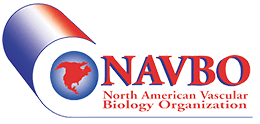Recorded Webinar with IVBM Speakers Courtney Griffin and Cindy St. Hilaire

Recorded Webinar with IVBM Speakers Courtney Griffin and Cindy St. Hilaire
Friday, May 5, 2023 12:00 AM - Sunday, May 5, 2024 12:00 AM (EDT)
Description
Join us as Dr. Courtney Griffin, Oklahoma Medical Research Foundation and Dr. Cindy St. Hilaire, University of Pittsburgh, present their lectures featured at the 22nd International Vascular Biology Meeting. Dr. Griffin will discuss "What Chromatin Remodelers Can Teach Us About Vascular Development and Integrity," and Dr. St. Hilaire will discuss "Novel Mechanisms Driving Vessel and Valve Calcification."
Abstract from Dr. Griffin: The Griffin lab is interested in vascular development, maintenance, and regression. Our long-term goal is to generate insights that can be exploited for developing therapeutic approaches to combat vascular pathologies. We often take an unconventional approach toward identifying genes important for vascular biology by exploiting ATP-dependent chromatin-remodeling complexes. These complexes epigenetically modulate chromatin to facilitate transcriptional regulation of target genes. By generating mice with vascular-specific mutations in the catalytic subunits (ATPases) of these complexes, we discover correlations between misregulated target genes and vascular phenotypes affecting endothelial cell morphology and behavior. This unique approach is yielding novel insights into genes that have been overlooked or underappreciated within the vascular community, and I will describe one such example in this Webinar.
Abstract from Dr. St. Hilaire: Background Calcific aortic valve disease (CAVD) is the pathological remodeling of the valve leaflets which leads to heart failure and high stroke risk. While several mechanisms are known to drive cardiovascular calcification, the initial steps orchestrating the osteogenic reprogramming of cells are not fully understood. Non-canonical functions of telomerase reverse transcriptase (TERT) include service as a cofactor to stimulate gene transcription, and TERT overexpression primes mesenchymal stem cells to differentiate into osteoblasts. We investigated whether TERT contributes to osteogenic reprogramming of valve interstitial cells. Methods Baseline transcription of TERT and osteogenic markers, senescence, DNA damage, and telomere length in valve tissue and primary aortic valve interstitial cells (VICs) from control and CAVD patients were assessed. TERT expression was depleted in cells using lentiviral vectors. Cells from Tert+/+ and Tert-/- mice were used to validate human findings. Immunofluorescence staining, proximity ligation assay, and chromatin immunoprecipitation assay were used in mechanistic experiments. Results TERT protein was highly expressed in calcified valve leaflets, without changes in telomere length, DNA damage, or senescence. These phenotypic features were retained in primary VICs isolated and cultured from those diseased tissues. TERT levels were increased with osteogenic or inflammatory stimuli, and genetic deletion or reduction of TERT prevented calcification of VICs isolated from humans and mice. Similar results were seen in smooth muscle cells (SMCs) and mesenchymal stem cells (MSCs). TERT and Signal Transducer and Activator of Transcription 5A/B (STAT5) colocalize and bind to the Runt-Related Transcription Factor 2 (RUNX2) gene promoter, and TERT and STAT5 co-localized in calcified valve tissues. Pharmacological inhibition of STAT5A prevented calcification in vitro. Conclusions These data show that non-canonical TERT activity is required for the calcification of VICs. TERT partners with STAT5A to bind to and activate the RUNX2 gene promoter. These data identify a novel therapeutic target to abate vascular calcification.
Images

This recording is available 24/7 from now through 1 year anniversary of webinar.
NAVBO Online
Webinar Series
